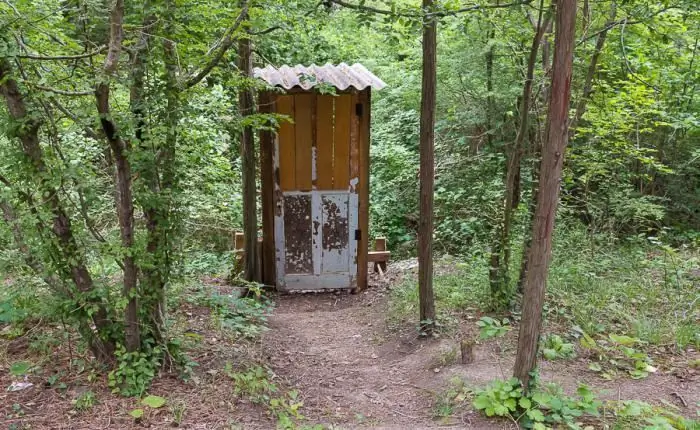- Author Harold Hamphrey [email protected].
- Public 2023-12-17 10:06.
- Last modified 2025-01-24 11:10.
Russia is famous all over the world for its water resources. And it's not just the seas. On the territory of the state there are many lakes, rivers, reservoirs, ponds. They have a different origin: some were formed naturally, others were artificial. Not the last place is occupied by the Quiet Pine River. Voronezh region and Belgorod region are the regions through which it flows. This watercourse is a right tributary of the Don River. The source is located in the Belgorod region (Pokrovka village), the mouth is in the Voronezh region. Refers to the basin of the Sea of Azov.

Characteristic
Tikhaya Pine is a river that originates on the slopes of the Central Russian Upland, in its southeastern part. Administratively, this region belongs to the Belgorod region (Volokonovsky district). It starts near the village of Pokrovka and looks like a small stream. In the region of Krasnogvardeysk, it is already beginning to expand and is becoming like a full-fledged river. More Silent Pinecontinues its journey through the Ostrogozhsky district (Voronezh region) until it reaches the Don. The mouth is located in the Liskinsky district, 2 kilometers from the farm Divnogorye.
The Quiet Pine River along its entire length is fed by water from springs, streams and streams flowing into it. The main ones are the Sosna, Olshanka, Userdets, Kamyshenka rivers. It is also worth noting that it replenishes its waters due to melting snow.
The approximate length of the Quiet Pine is 161 km, and the area is 4350 square meters. km. In winter, until mid-March, it is covered with ice. Opens in early spring, high water lasts until April.
The Quiet Pine River is remarkable not only for fishing and beach recreation, but also for the fact that near the coastal city of Alekseevka there are deposits of silicon, which, according to archaeologists, belong to the Paleolithic era.

Hydronym
Many residents of coastal settlements are interested in the origin of the name of the Tikhaya Sosna river. To date, no official sources have survived. Some believe that in the past (several centuries ago) many pine trees grew along the banks of the river, which subsequently dried up or were cut down. This is an assumption about the origin of the second part of the name. And about the first there is another belief. It is believed that the definition of "quiet" flow received from that which has a calm flow.
According to legend, at first this reservoir was simply called Pine, since the banks were filled with these trees, and later, when coniferous forests disappeared, an epithet was added to the name,describing the nature of the river.
But there is another version of the origin of the name. Due to the calm nature of the flow, the inhabitants of the coastal settlements called the river - “quiet from sleep” (otherwise “quiet, as after sleep”). Subsequently, the words were combined, and such an interesting name came out.

Coastline
The Quiet Pine River is quite well developed throughout almost the entire coast, especially in the valley. Its right bank is low, while its left bank is high. Often there are ravines, as well as deposits of chalk rocks. In some places there are also small hills. Soils on the coast near Voronezh and Belgorod are mostly black earth.
Many areas on the banks of the Silent Pine are used for agriculture. And in some parts of the coastal zones, oak forests and broad-leaved forests grow. In addition to them, wild fruit trees such as apples and pears also grow. And in the lower reaches, at the foot of the river, there are forest-steppes.
Fishing
The Quiet Pine River, a photo of which can be seen in the article, is popular among fishing enthusiasts. Most often, the catch here is perch, vobla, roach, pike, bream, beluga and others. The fact that a lot of fish lived in this river several centuries ago is known from preserved sources, in which it was written that the inhabitants of the Voronezh region were engaged in fishing for sturgeon, beluga.
But even in Soviet times, it was known about the incredible catch on this river. This is how Silent Pine got into the Guinness Book of Records. The sturgeon caughtgiant size: weighed more than a ton (1227 kg). The luck of the anglers did not end there, in the giant fish there was caviar, the weight of which was almost 250 kg. This catch was made in 1924
Fishermen who come to these places to go fishing should know that the beluga that currently lives in the waters of the river is under protection and is listed in the Red Book.

Rest
The Quiet Pine River is also interesting for those people who prefer to spend time in nature near a reservoir. On the coast you can often see the cars of vacationers. They camp here with tents. The best time to visit is April, May and June. Swimming is not recommended due to shallow water and gravel obstacles. Visitors can stay not only in tent camps, but also in recreation centers. A sanatorium was also built on the river bank.
Divnogorye
As mentioned above, the Quiet Pine River (the confluence with the Don) flows near the Divnogorye farm. This area is represented by incredibly beautiful landscapes. In 1991, a reserve of the same name was opened in the region, which is a historical and archaeological museum. Its main attractions are the cave church and the complex of monuments Mayatskoye settlement.

Divnogorye is also popular as a place for family holidays. Tourists coming here acquire a number of undeniable advantages: they can stop for the night with tents, jog along the coast and sunbathe, in the evenings sit bycampfire, as well as barbecue on the grill.
Come to these places for vacation! Everyone will get a lot of impressions and fully enjoy the fresh air and beautiful nature.






